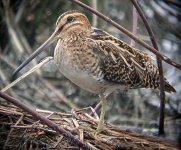Sir William
I'd rather be birding
Sorry if this is the wrong forum for this type of question, but I couldn't find a better spot to put it!
I was browsing through somebody's digiscoping pictures and they are breathtaking! Looking up the equipment used the total price was under $1500. What are the other benefits to digiscoping and what are the fallbacks to doing it instead of just using a higher end DSLR and lens? Does digiscoping give you a better range and how is the quality compared to a telephoto lens?
Thanks so much. Forgive my lack of knowledge on the subject!
I was browsing through somebody's digiscoping pictures and they are breathtaking! Looking up the equipment used the total price was under $1500. What are the other benefits to digiscoping and what are the fallbacks to doing it instead of just using a higher end DSLR and lens? Does digiscoping give you a better range and how is the quality compared to a telephoto lens?
Thanks so much. Forgive my lack of knowledge on the subject!





